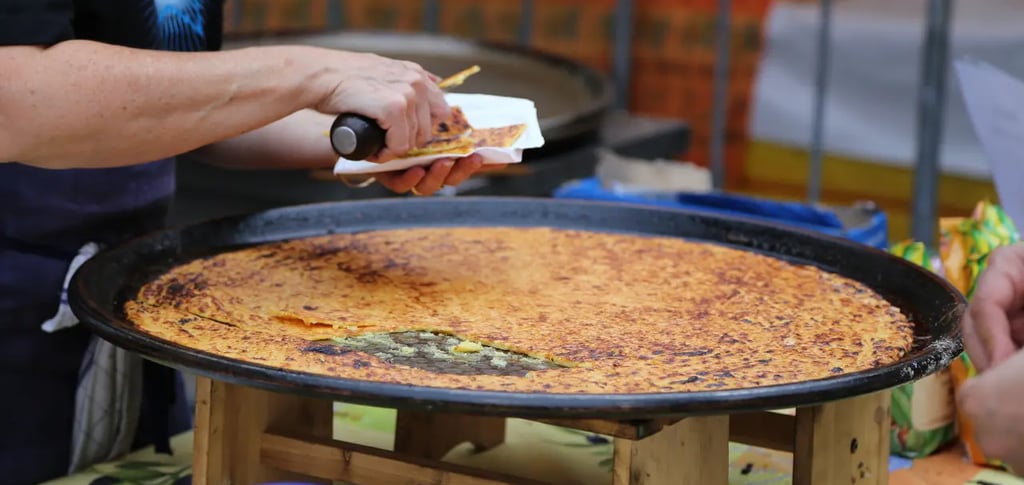Farinata di Ceci: Liguria’s Golden Slice of Simplicity
Crispy, tender, and made from just chickpea flour, olive oil, and salt — this centuries-old Ligurian classic proves less really is more.
LIGURIAFOOD


Crisp on the edges, soft in the middle, golden like the Ligurian coast in the afternoon sun—farinata di ceci is the ultimate proof of the merits of the simplest of things. All vegan and vegetarian, and consisting of nothing more than chickpea flour, water, olive oil, and salt, it’s the sort of no-frills recipe our grandmothers could whip up with ingredients available in the kitchen, no pretenses, pure goodness.
History and Origins:
Farinata has ancient roots along the Ligurian coast and in parts of Tuscany and Piedmont. Legend says it was born by accident in the Middle Ages when a storm hit Genoese ships carrying chickpea flour and barrels of olive oil. The soaked flour paste dried in the sun, was baked, and turned into a tasty flatbread. Traditionally, it was cooked in a shallow, round ceramic or copper pan—sometimes over wood fire—to get that signature crisp crust and tender middle.
Ingredients and Preparation:
The recipe is so simple: mix chickpea flour with water, olive oil, and salt and leave for a few hours. The mixture is slid into a greased shallow pan and roasted for a short burst in a hot oven with the top blistering and going brown. Conventionally, of course, farinata used to be roasted on huge ceramic trays over hot coals and had a rich flavor not readily duplicated in modern kitchen ovens.
Where to Try It:
The real deal can only be had in Liguria—above all in Genoa at Antica Sciamadda or Sa Pesta, where the still-steaming-from-the-oven versions are still available. In Savona, Farinata da Ugo has been producing the dish for generations. Along the Tuscan coast in cities such as Livorno, you can find a variant known as cecina. Slices are often available wrapped in paper in bakeries so that you can buy and eat them on the go.
Conclusion:
A single bite of farinata di ceci is a flashback in flavors—unadulterated, wholesome, and utterly comforting. It is a recipe that has not had to evolve over the ages, illustrating the old adage that the most ancient recipes are the most eternal youth-friendly dishes.
